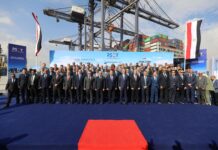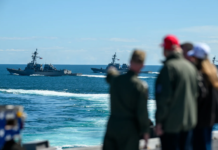
Liner operators have been increasing the proportion of owned to chartered ships in their fleet as the Covid-19 pandemic made them cash-rich amid rising charter costs, according to Alphaliner’s report.
MSC has been the most striking example of a carrier favouring vessel owner ship at the expense of chartering, having bought the most ships among operators since 2020.
MSC has ordered 88 newbuildings and acquired 355 secondhand vessels. A decade ago, the Geneva-based carrier had over 60% of its fleet on charter, but now, this same percentage applies to MSC’s owned tonnage, with 36% of its fleet comprising chartered vessels.
MSC now operates a fleet of 5.7 million TEUs, more than doubling from 2.4 million TEUs 10 years ago.
Alphaliner said, “Considering the numerous grey areas surrounding bareboat agreements with purchase options or obligations that MSC is believed to use extensively, particularly on large newbuildings, the proportion of vessels de facto, or ultimately, owned by MSC could even be higher than 70%.”
CMA CGM has also massively boosted its ownership of container tonnage to support the growth of its fleet, which now stands at 3.68 million TEUs. While 10 years ago, the French carrier owned just 20% of its operated fleet, with 80% on charter, its much bigger fleet is today 40% owned.
CMA CGM has emulated MSC in engineering an ambitious fleet expansion spree, including both newbuildings and second-hand units, ordering at least 80 new ships and buying no fewer than 112 pre-owned vessels in the last four years.
In Asia, HMM has seen a huge rise in the proportion of owned tonnage in its operated fleet with more than half of the South Korean carrier’s ships now owned, versus 30% a decade ago.
After nearing collapse in 2016, HMM fully reset its business model, including moving out of expensive charters and building a modern fleet of large vessels for its own account. Today, HMM’s fleet of 816,077 TEUs is 55% owned, up from 30% a decade ago.
Chinese intra-Asia carrier SITC Container Lines has made a dramatic shift, almost eschewing chartered ships. Back in 2014, half its fleet was chartered. Today, 95% of SITC’s fleet of 162,614 TEUs is owned.
Only Israel’s ZIM Line has stuck to its asset-light strategy. Currently, 93% of its fleet of 720,396 TEUs is chartered, up from 70% in 2014.
Martina Li
Asia Correspondent





